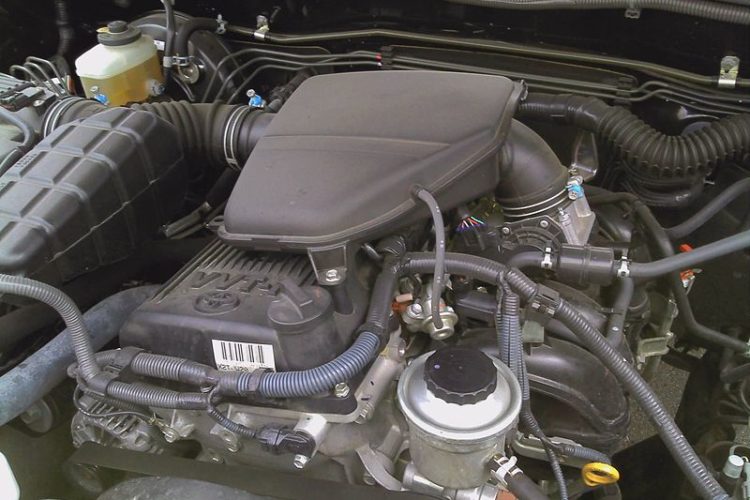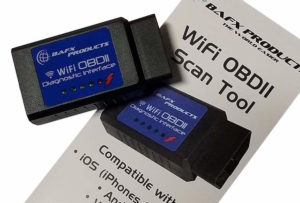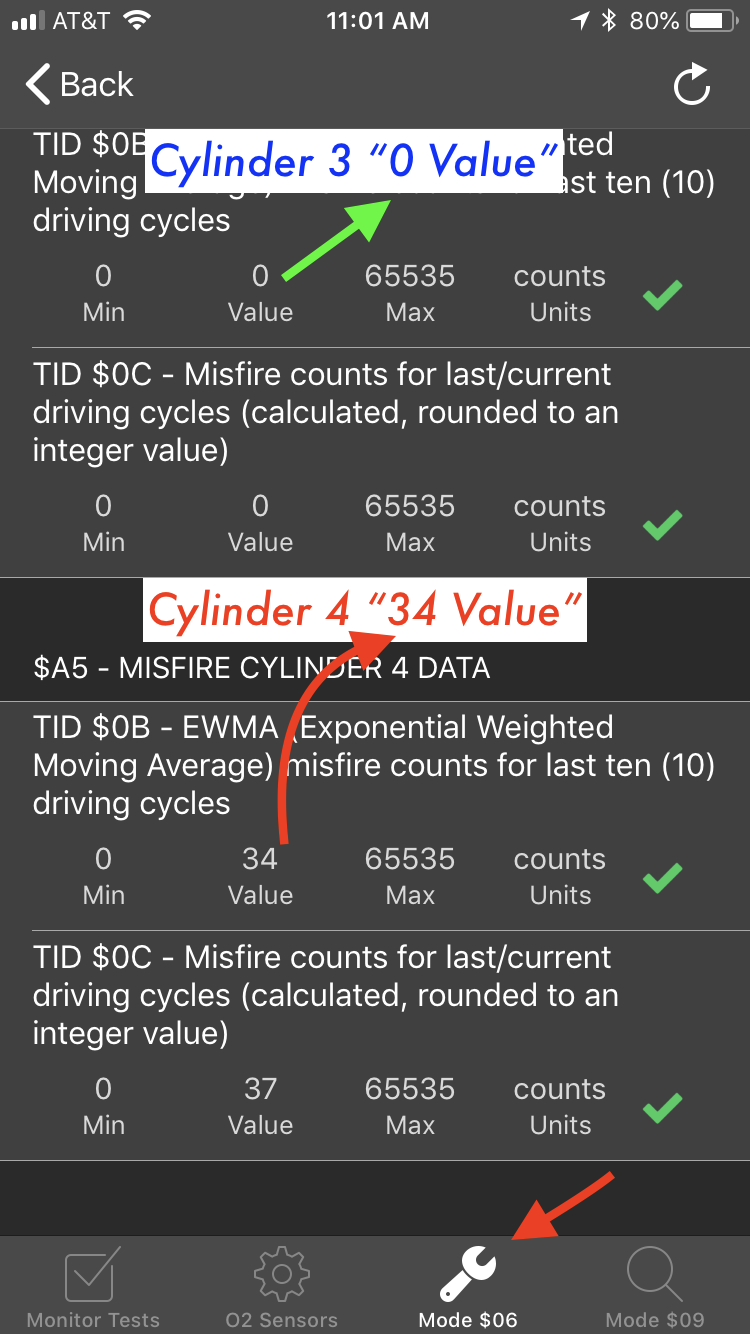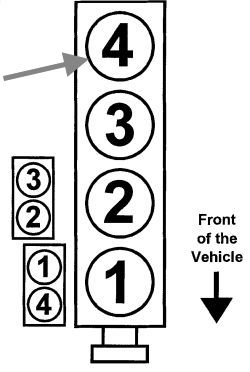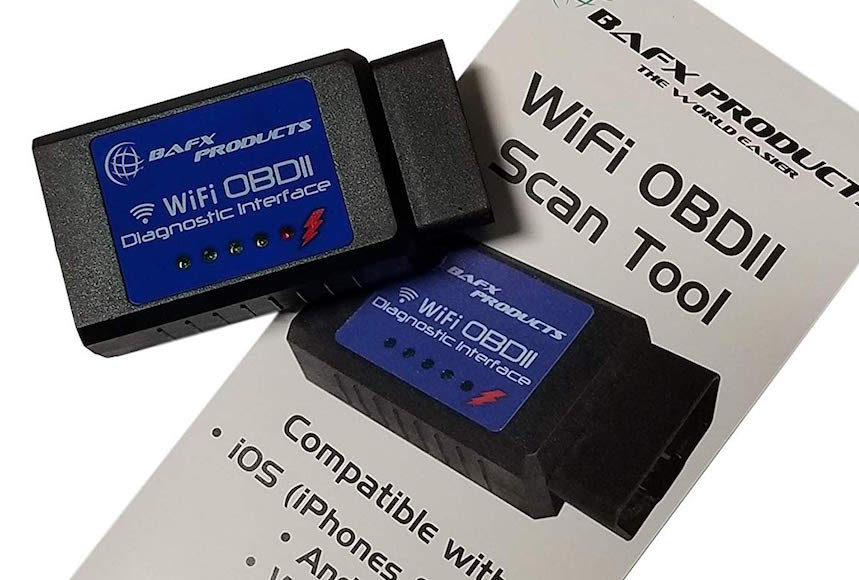This applies to all Toyota VVTI 2.7l L4 2TR-FE engines. The particular truck I was working on with this problem was a 2010 Toyota Tacoma L4 2.7l with around 150,000 miles. The same principles for this diagnosis apply to any diagnosis on a car with an OBD2 system and a suspected misfire with no check engine codes/nor pending codes (CEL).
Table of Contents
Tools that were essential to making this diagnosis and saving me a lot of money and headache:
- OBD2 Bluetooth Scanner ($15-30) w/ OBD Fusion app ($10-15) on iPhone/Android.
- 5/8″ Magnetic Swivel Spark Plug Socket
- 3/8″ Metric Socket Set 6mm-19mm
- 3/8″ Magnetic Extension Set
- Silicone Paste (Dielectric Grease)
- NGK or Denso Iridium Verified REAL Spark Plugs (Yes, buy these locally there are lots of fakes on eBay and Amazon)
- 3/8″ Cordless Impact Ratchet
(SUPER time saver)
First, What Were the Symptoms:
Sitting at idle the Toyota Tacoma would randomly feel like it was misfiring and the RPM’s would drop for a second. Then it would pick itself back up and idle normally for a couple of seconds until the next misfire seemed to happen. If you do not know what a misfire feels like it can feel like the car is about to die or buck for a second then it catches itself. You could hear the exhaust popping (almost like a bad exhaust valve) if standing outside the truck when it would “skip or misfire.” At this point, I wasn’t sure if it was a mechanical failure or a part failing intermittently (the no CEL had me perplexed).
What does a misfire feel like?
While driving a misfire feels like a car starts to buck and lose power. Gas mileage will suffer and so will acceleration. If you want to feel what a misfire feels like unplug an injector or a coil pack and start your engine. You should feel the engine running rough and if you were to drive it would definitely have less power– one whole cylinder isn’t contributing to engine power. It won’t do any damage to your engine if you only run it for a second or two to get a feeling of what a misfire feels like– but, it should immediately set the check engine light with a coil or injector unplugged (hard code).
Misfire With No Check Engine Light:
It is actually super common on modern cars to have a misfire that doesn’t set the check engine light. There are some tricks and tools (OBD2 Scanner with Mode 06) that are absolutely essential to avoid throwing parts and money at your car.
A very basic understanding of the diagnostic system on a car is that it is constantly scanning for a misfire in each cylinder. However, if a misfire is happening below the threshold amount (say 2.5% of the time) then it will not throw the check engine light. Meaning the computer is detecting a misfire, but it isn’t happening enough for it to think it should alert you.
If it was constantly lighting up for every single misfire the check engine light would come on too often and people would start ignoring it.
The cool thing is that with the right scan tool and application you can dig into the computers stored data and actually see what cylinders are misfiring with a live count. This was happening with the 2010 Toyota Tacoma 2.7l I was working on. Once I pulled it up on the scan tool and found the Mode 06 data set it showed I had misfires on cylinder #4. Here is the actual screenshot from the scanner as it was idling and randomly misfiring (the number would go up every time it hiccuped).
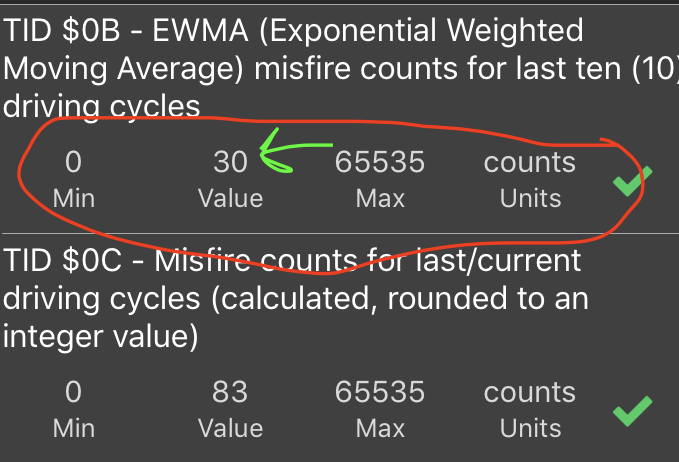
As you can see from this screenshot the onboard diagnostic system on the truck had detected 30 misfires, and if you look below that during the current drive cycle it had 83 misfires. Once again, these were not enough to throw a check engine light, yet here is SUPER VALUABLE information for making a quick diagnosis.
Ok, so let’s dig a little deeper and scroll down so we can see each cylinder misfire count (this is when it gets magical).
We Are So Close to a Diagnosis!
So what information do we have now? We know what cylinder is misfiring– the #4 cylinder is showing a misfire count (the others have zero misfires). Looking up a cylinder layout map on google shows us that cylinder four is the farthest back towards the rear of the truck.
Real Diagnosing is Always Better Than Throwing Parts:
There a couple of different ways to go about this. There is no “right or wrong way” as long as you are eliminating variables one-by-one and working smart. The ultimate goal is quite simple– isolating variables.
We know we need a spark, fuel, air, and compression for the engine to run. Since the engine is running well on the other 3 cylinders (no misfiring codes) we know that this problem is only our one cylinder.
If we had an oscilloscope we could graph the burn and figure out what part was likely bad. Assuming you don’t know how to use an oscilloscope or don’t have one, we can still figure out what is wrong (it just may take us a little longer).
Here is where the difference between being just a DIYer that throws parts at a car, and being able to diagnosis the problem happens. Many DIYers or bad mechanics would stop here and tell you to buy all new coils and plugs and the misfire would probably go away 90% of the time (until it was actually the injector that failed).
So, let us move forward with eliminating variables so we can figure out what part is causing the intermittent misfire.
Steps to Diagnosing what is Causing Intermittent Misfire:
Swap Coils:
- Swap the Coil from the #4 Cylinder to another cylinder which is easy to get to (I traded #4 coil for #1 coil)
- Unplug the battery to reset the OBD system on the car (leave it unplugged while you are swapping the coils)
- Restart the car with Mode 06 data pulled up and let it run until you feel the misfire again.
- What cylinder has the misfire now? Did it stay on cylinder #4 or move to cylinder #1?
- If it moved then you know the coil or coil wiring is bad– check the wiring, if good, replace the coil with OEM one.
- If the misfire stayed where it was– we know the coil is not bad and we can move forward with our diagnosis.
Swap Spark Plugs:
- Leave the coils where they are and now swap the spark plug from cylinder #4 to cylinder #1 and vice-versa.
- Once again reset ECU by leaving the battery disconnected while working on the truck.
- Restart the truck and access your Mode 06 data using OBD Fusion (or whatever scan tool you have that can do this– pro tip, not all can).
- Did the misfire now change cylinders?
- Yes– Spark Plug is bad– replace it with an OEM one.
- No– misfire stayed on same– swap injector / do a compression test. You can do a compression test at the beginning or start with swapping injectors if you want (injectors are the hardest to swap on these trucks, and in my experience the least likely culprit so I waited till last to do that (if needed).
Swap Injectors:
- Before swapping injectors I would do a compression test on the misfiring cylinder. Injectors can be tricky to change and you want to be sure you feel confident working around pressurized gasoline on a hot engine.
- First, check for injector pulse by listening to the injector using a long metal extension and holding it to your ear.
- Do you hear a click click click?
- Or nothing? If nothing, the injector is either unplugged, wiring bad (check using NOID light), or the injector is bad.
- If you hear no clicking and the wiring checks out ok, I would recommend just replacing the injector and not swapping it with a known good injector (takes too much time and the more injectors you pop out of the fuel rail the more chance you get get a vacuum leak or fuel leak).
- Watch this video by BriansMobile1 about how to test injectors on the car. It has some really great information about how to diagnose a bad injector, from one of my favorite car repair YouTubers.
Here is the screenshot showing a misfire on Cylinder #1 after I swapped Cylinder #4 Spark plug for Cylinder #1.
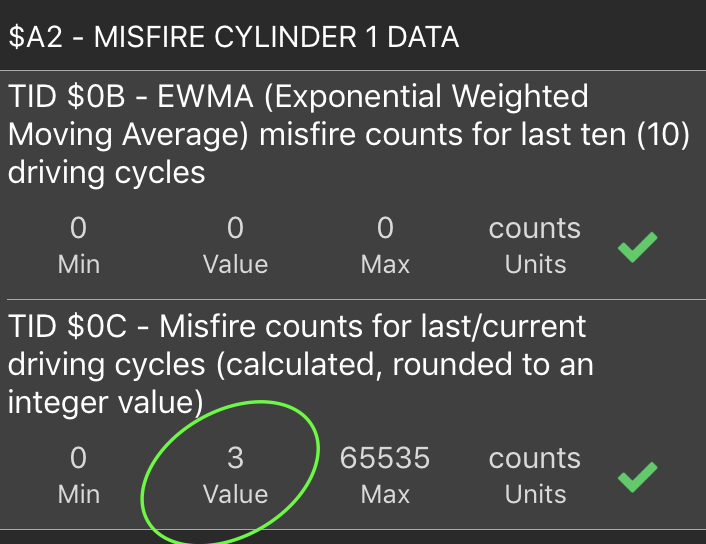
My Intermittent Misfire Was A Faulty Brand New Denso Spark Plug:
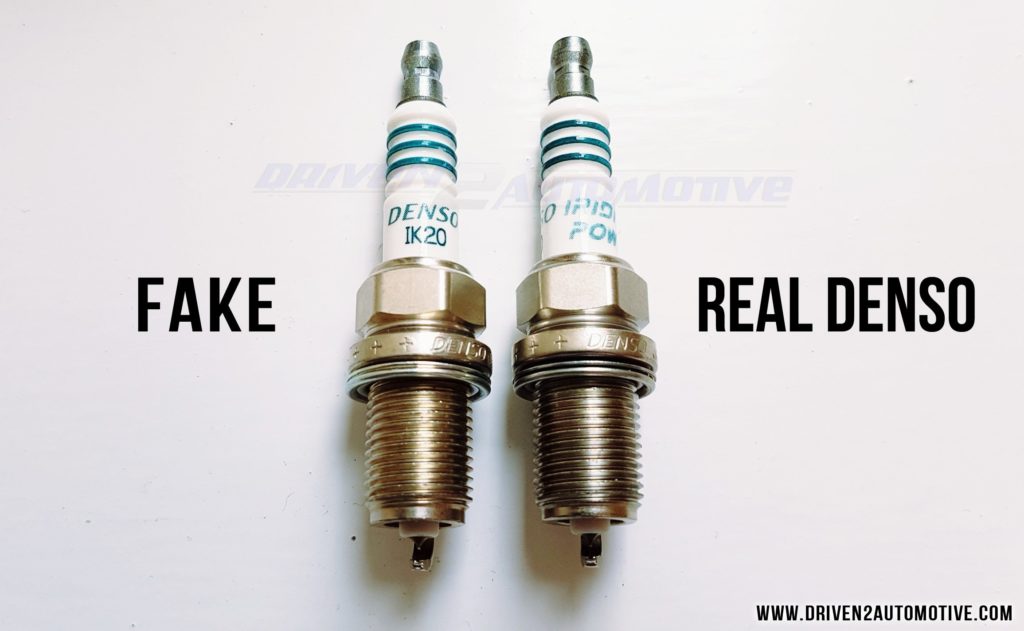
I had just replaced the spark plugs in this truck less than 3,000 miles ago. I had bought the plugs on eBay and they either got damaged during shipping or it was just a faulty new plug. The problem was it wasn’t bad enough to throw a CEL code but it was misfiring pretty bad at idle.
If I hadn’t caught it earlier it could have damaged my catalytic converter leading to a much more expensive repair.
A visual inspection of the plug showed nothing wrong, there wasn’t any obviously cracked porcelain or huge gap. I replaced the one plug with a new one from my local parts store and everything is back to normal.
Unfortunately, I can’t claim that I had a fake “counterfeit” Denso spark plug. I will report back once I take the plug and go compare it with a “known real” Denso plug at Autozone or O’Reilly auto parts. If I do find it was a fake set from eBay I will post the details and will be replacing the other 3 new fake plugs as well (I more assume it was just a faulty plug– it happens).
Mode $06 is the Most Undervalued Test by DIYers:
The one takeaway I hope you get from this is that you cannot always rely on pending or stored codes for reading misfires. Yes, engines and computer have gotten super advanced but they do not want to always alert you to a problem if they deem it “not significant.”
Obviously, the engineers were trying to find the perfect balance between a system that alerts and a system that doesn’t alert too often. If you want to learn more about Mode $06 and how many misfires the computer has to detect before throwing a code I highly recommend you watch this video:
There are plenty of professional mechanics that probably don’t even know Mode $06 exists or how to use it. That is finding a great mechanic (technician would be the better word) is super valuable. A parts thrower style mechanic would have said you need all new OEM coils and Spark Plugs for all four cylinders. On my 2010 Toyota Tacoma four OEM coils ($120 each) + NGK plugs ($10 each) would have been around $600 dollars total with labor.
I fixed my truck for a $10 spark plug. The OBD2 Bluetooth scanner and application also only cost me around $40 total. Worth it? I think so.
If you are in the market for a scan tool check out my list of the best OBD2 Bluetooth scanners in 2019 here. As long as they work with your phone then the actual plug-in part that goes into the OBD2 port isn’t that important. What is important is the application you use to access the data (there are lots on the market). Make sure to spend the extra money and get the full-access application (usually $10-15). The best thing to ask is can the scan tool access Mode $06 data?
Conclusions for Intermittent (No CEL) Misfires:
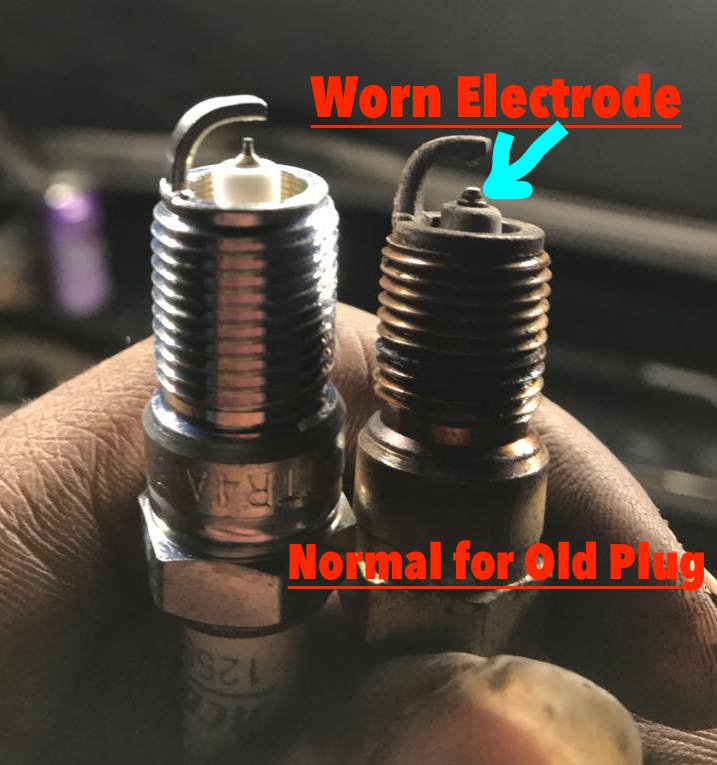
Always eliminate variables one by one to come to the correct diagnosis.
Try to avoid throwing unnecessary parts and money at your car or truck.
If all the other cylinders are working well and there is no CEL light it is likely an intermittent part failure. These are the hardest to diagnosis because they throw no CEL code which gives you the clue as to what cylinder is missing. Mode $06 is the tool needed to see what the computer is seeing and make the decision for yourself whether or not it is “normal” or actually misfiring.
Stop buying Spark Plugs on Amazon or eBay (especially Iridium Denso or NGK plugs) people are faking the plugs. The fake plugs can cause engine damage (they may be longer or shorter than the real plugs).

